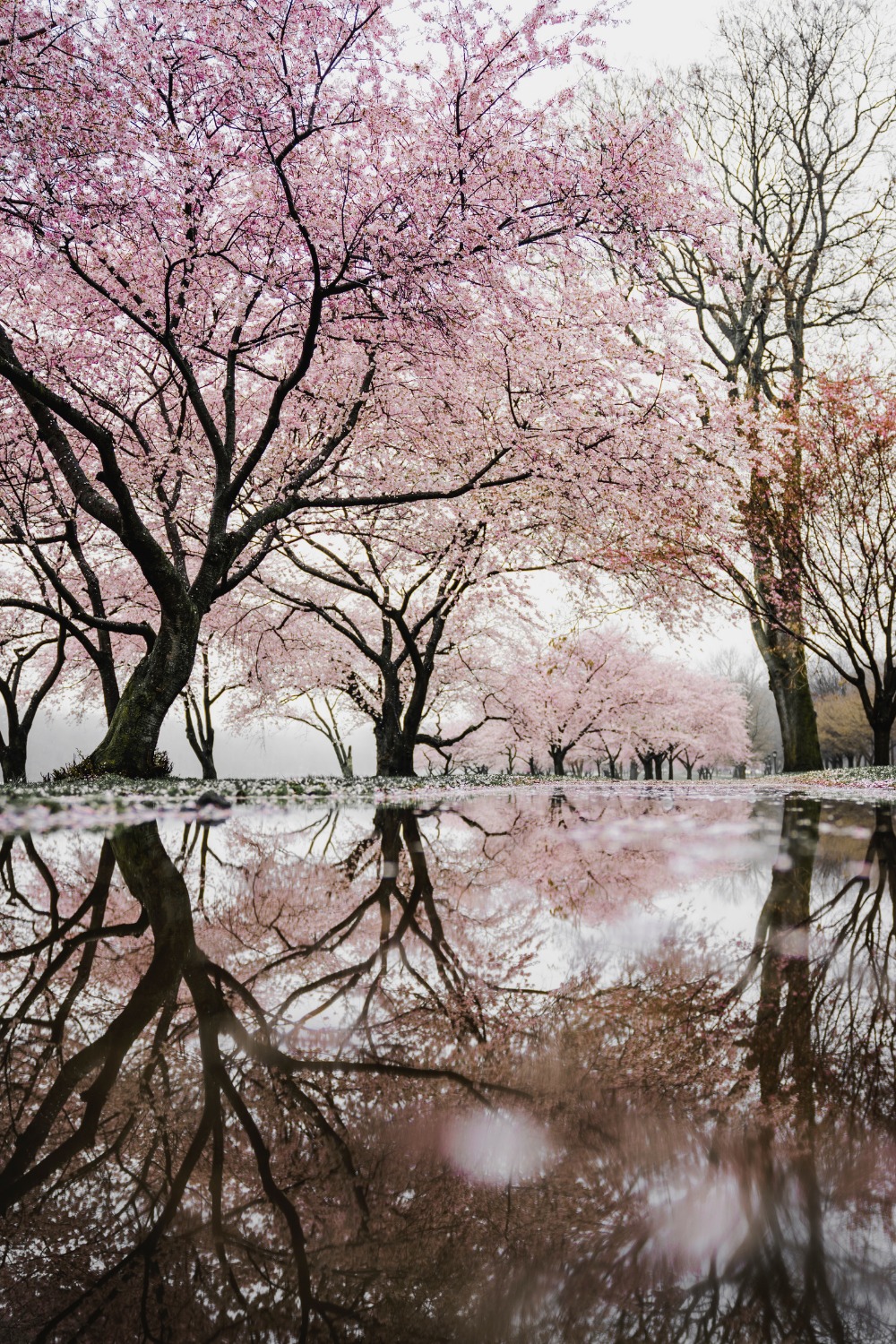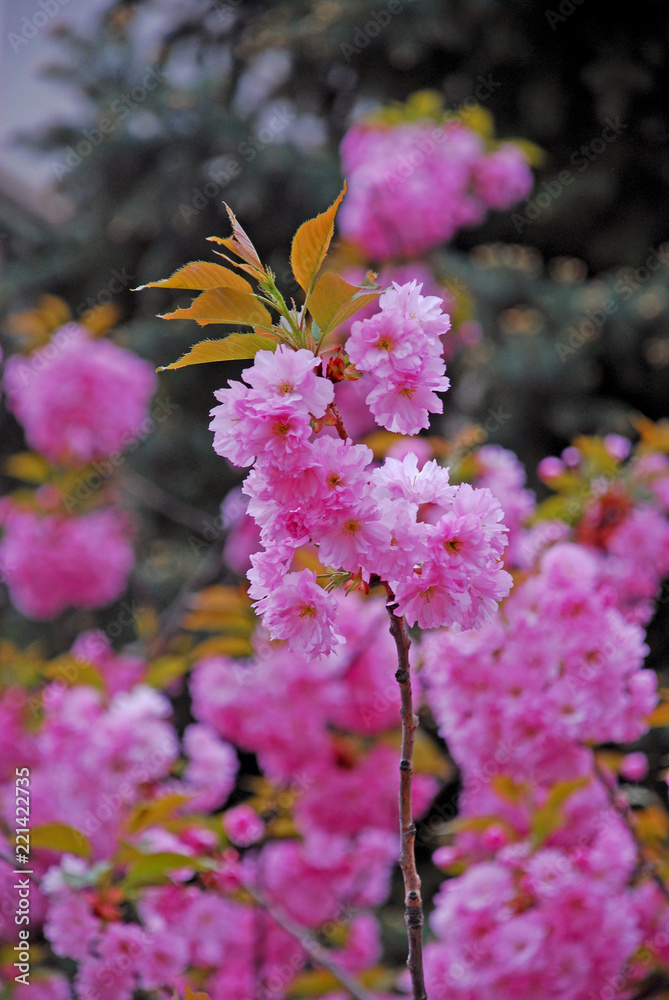The Enduring Allure of the Blossom: Beyond Aesthetics and into the Heart of Spring

The blossom. The very word evokes images of delicate beauty, fleeting moments, and the vibrant promise of renewal. From the humble apple blossom to the majestic cherry blossom, these floral displays are more than just pretty pictures; they are powerful symbols woven into cultures and histories across the globe. This article delves into the multifaceted world of the blossom, exploring its significance in nature, art, culture, and even our own well-being.
The Biological Imperative: Blossoms as Reproductive Powerhouses
At its core, the blossom is a biological marvel, the reproductive structure of flowering plants. Its primary function is to attract pollinators, ensuring the continuation of the species. The vibrant colors, intoxicating scents, and sweet nectar are all carefully evolved strategies designed to lure insects, birds, and even mammals to carry pollen from one flower to another.
The anatomy of a blossom is a testament to this intricate process. Petals, often the most visually striking component, serve as visual cues, guiding pollinators towards the flower. Sepals, located beneath the petals, protect the developing bud. Within the flower lies the pistil, the female reproductive organ, consisting of the stigma (which receives pollen), the style (a stalk connecting the stigma to the ovary), and the ovary (containing the ovules, which develop into seeds). The stamen, the male reproductive organ, consists of the anther (where pollen is produced) and the filament (a stalk supporting the anther).
The success of a blossom hinges on the intricate dance between plant and pollinator. Different blossoms have evolved to attract specific pollinators. For example, brightly colored, tubular flowers often attract hummingbirds, while fragrant, white blossoms are more likely to attract moths. The precise timing of blooming is also crucial, synchronized with the emergence and activity of pollinators.
The beauty we admire in a blossom is, in essence, a product of natural selection, a testament to the power of adaptation and the enduring drive to reproduce.
Blossoms in Art and Literature: Capturing Ephemeral Beauty
The transient nature of blossoms has long captivated artists and writers, inspiring countless works that celebrate their beauty and symbolize the fleeting nature of life. From ancient Chinese paintings depicting plum blossoms as symbols of resilience to Impressionist masterpieces capturing the ethereal light filtering through apple orchards, blossoms have consistently served as a source of artistic inspiration.
Japanese art, in particular, is deeply intertwined with the appreciation of blossoms, especially the cherry blossom, or sakura. Hanami, the tradition of cherry blossom viewing, is a cultural phenomenon, a time for picnics, contemplation, and appreciation of the ephemeral beauty of the blooming trees. The sakura is not just a beautiful flower; it is a powerful symbol of impermanence, renewal, and the fragility of life, a reminder to cherish the present moment.
In literature, blossoms often serve as metaphors for youth, beauty, and the fleeting nature of time. Poets have used the image of a blossoming tree to represent the promise of spring, the blossoming of love, and the bittersweet realization that all things must eventually fade. From Shakespeare’s sonnets to Wordsworth’s poems, blossoms have consistently served as powerful symbols of human experience.

Blossoms in Culture and Tradition: Symbolism Across the Globe
Beyond art and literature, blossoms hold significant cultural and symbolic meaning in various societies around the world.
- China: Plum blossoms, or mei hua, are revered in Chinese culture as symbols of perseverance, hope, and beauty in the face of adversity. They bloom in the depths of winter, defying the harsh conditions and heralding the arrival of spring.
- Japan: As mentioned earlier, cherry blossoms (sakura) are central to Japanese culture, representing the beauty and transience of life. They are a symbol of renewal and a reminder to appreciate the fleeting moments of joy and beauty.
- Greece: Olive blossoms are associated with peace, wisdom, and victory. The olive tree, with its long lifespan and resilient nature, is a symbol of enduring strength and prosperity.
- England: Apple blossoms are often associated with fertility, love, and springtime. They are a common motif in folklore and traditions, representing the abundance and renewal of nature.
- India: The lotus blossom holds deep spiritual significance in Hinduism and Buddhism, representing purity, enlightenment, and spiritual awakening. Its ability to emerge from muddy waters and bloom in pristine beauty symbolizes the potential for transformation and spiritual growth.

These are just a few examples of the diverse cultural meanings attributed to blossoms around the world. Their symbolism is often rooted in the specific characteristics of the plant, the timing of its blooming, and its relationship to the natural environment.

The Healing Power of Blossoms: Well-being and Therapeutic Benefits
Beyond their aesthetic and symbolic value, blossoms have also been recognized for their potential health benefits. Aromatherapy utilizes the essential oils extracted from flowers, including blossoms, to promote relaxation, reduce stress, and improve mood. The scent of lavender blossoms, for example, is known for its calming properties, while the scent of jasmine blossoms can be uplifting and energizing.
Flower essences, another form of alternative medicine, are believed to capture the vibrational energy of flowers, which can then be used to address emotional and mental imbalances. Bach flower remedies, a well-known system of flower essences, utilizes a variety of blossoms to treat specific emotional states.
Even simply spending time in nature, surrounded by blossoming trees and flowers, can have a profound impact on our well-being. Studies have shown that exposure to nature can reduce stress hormones, lower blood pressure, and improve cognitive function. The beauty and tranquility of a blossoming garden can provide a much-needed respite from the stresses of modern life.
The Future of Blossoms: Conservation and Appreciation
In a world facing increasing environmental challenges, it is crucial to protect and preserve the beauty and diversity of blossoms. Climate change, habitat loss, and pollution all pose significant threats to flowering plants and the pollinators that depend on them.
Conservation efforts, such as habitat restoration, sustainable gardening practices, and the protection of pollinators, are essential to ensure the future of blossoms. By supporting these efforts, we can help preserve the beauty and ecological value of these vital components of our natural world.
Furthermore, cultivating a greater appreciation for blossoms in our daily lives can enrich our experiences and foster a deeper connection to nature. Whether it’s planting a flowering tree in our garden, visiting a botanical garden, or simply taking a moment to admire the beauty of a blossoming flower, we can all benefit from the joy and inspiration that blossoms provide.
The blossom, in all its beauty and complexity, is a reminder of the interconnectedness of life, the power of nature, and the enduring allure of spring. By understanding and appreciating the multifaceted significance of blossoms, we can cultivate a deeper connection to the natural world and contribute to their preservation for generations to come.
Frequently Asked Questions (FAQ)
Q: What is the difference between a flower and a blossom?
A: While the terms are often used interchangeably, "blossom" typically refers to the flowers of fruit-bearing trees or shrubs, especially those blooming in spring. "Flower" is a more general term encompassing all flowering plants.
Q: Why do blossoms only last for a short time?
A: The short lifespan of blossoms is a result of their primary function: reproduction. Once pollination occurs, the petals often wither and fall off as the plant focuses its energy on developing the fruit or seeds.
Q: What are some ways to attract pollinators to my garden?
A: Plant a variety of flowering plants that bloom at different times of the year. Choose native plants whenever possible, as they are often best adapted to local pollinators. Avoid using pesticides, which can harm pollinators. Provide a source of water, such as a bird bath or shallow dish of water.
Q: Are all blossoms edible?
A: No, not all blossoms are edible. Some blossoms are poisonous and can cause illness if ingested. It’s crucial to identify a blossom accurately before consuming it. Some edible blossoms include squash blossoms, rose petals, and nasturtium flowers.
Q: How can I preserve blossoms?
A: There are several ways to preserve blossoms, including drying, pressing, and using silica gel. Dried blossoms can be used in potpourri, crafts, and teas. Pressed blossoms can be used to create artwork or decorate cards.
Q: What is the significance of cherry blossoms in Japanese culture?
A: Cherry blossoms, or sakura, are deeply symbolic in Japanese culture. They represent the beauty and transience of life, renewal, and the fleeting nature of existence. Hanami, the tradition of cherry blossom viewing, is a cherished cultural event.
Q: How does climate change affect blossoms?
A: Climate change can disrupt the timing of blooming, leading to mismatches between blossoms and pollinators. Warmer temperatures can cause blossoms to bloom earlier, while extreme weather events can damage or destroy blossoms.
Q: Can I grow blossoms in containers?
A: Yes, many flowering plants can be grown in containers. Choose a container that is large enough to accommodate the plant’s root system. Use a well-draining potting mix and provide adequate sunlight and water.
Q: What are some common types of blossoms?
A: Some common types of blossoms include cherry blossoms, apple blossoms, peach blossoms, plum blossoms, almond blossoms, magnolia blossoms, and dogwood blossoms.
Q: Where can I learn more about blossoms?
A: You can learn more about blossoms by visiting botanical gardens, arboretums, and nurseries. You can also find information online and in books about flowering plants and horticulture.
Conclusion
The blossom, a seemingly simple structure, is a gateway to understanding the intricate beauty and interconnectedness of the natural world. From its biological imperative to its cultural significance, the blossom has captivated and inspired humans for centuries. By appreciating its beauty, understanding its importance, and actively participating in its conservation, we can ensure that the allure of the blossom continues to enrich our lives and the lives of future generations. The fleeting moment of a blossom in full bloom is a powerful reminder to appreciate the beauty and fragility of life, and to cherish the promise of renewal that spring brings. Let us embrace the blossom, not just as a symbol of beauty, but as a call to action to protect and preserve the natural world for all.
